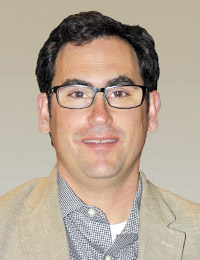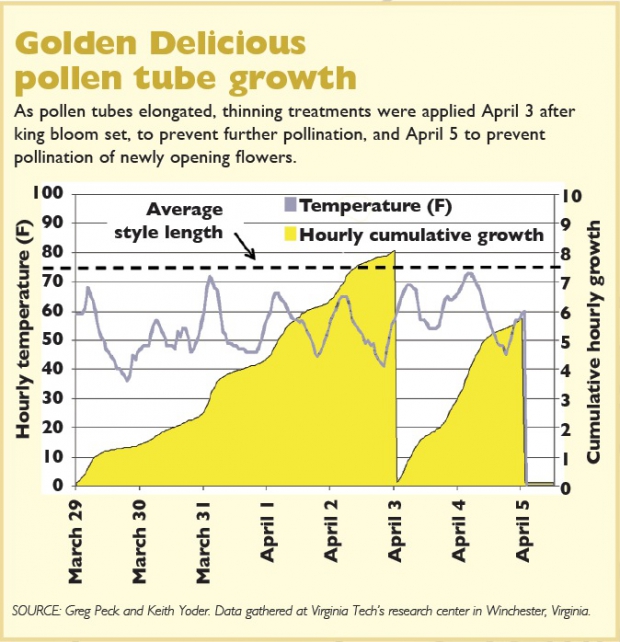The team of researchers who developed the pollen tube growth model for thinning apples at blossom time is led by plant pathologist Dr. Keith Yoder, horticulturist Dr. Gregory Peck, and research specialist Leon Combs, supported by research specialists and graduate students who work with plant growth regulators.
The team at Virginia Tech spent a decade developing the model. They have worked with apple growers in Washington State and are now working to utilize the models for eastern growers, who face greater challenges as they try to grow apples organically in a humid climate.
“The pollen tube growth model can be used to improve bloom thinning application timing in the East as well as the West,” they say. “Hopefully, with fine-tuning of rates and optimal timing and other approaches, more thinning can be achieved with minimal fruit russetting.”
Yoder and Peck are familiar speakers at various venues as they explain the thinning model they developed and why they like it. Last year, both spoke at the International Fruit Tree Association meeting in Boston, and they spoke at the Mid-Atlantic Fruit and Vegetable Convention in January.
Yoder and Peck would like to see organic apple production grow and prosper—in the East as well as the West—and thinning is a major problem for organic growers whose only chemical thinning method is fish oil and liquid lime sulfur applied during bloom.
The Virginia Tech scientists decided to build on that and develop a thinning program that would work for all apple growers—organic and conventional.

Gregory Peck
“In apple production, crop thinning during bloom produces the largest fruit, the greatest return bloom in the following year, and reduces biennial bearing,” Peck said. “Ideally, growers would allow set of the king bloom, then apply bloom thinner and prevent further set of later blossoms.”
Application timing is important. For a flower to be fertilized, a live pollen grain must extend a pollen tube about 8 millimeters to the ovule, and it takes about 48 hours to do that.
However, the time required depends on temperature, and the length of the pollen tube varies by variety.
Timing
Growers want to know when the king bloom has been fertilized, and then they need to know when to prevent new flowers, especially side bloom, from being fertilized. Two or three sprays after the king bloom sets are usually needed.
“In the past, the application timing has been subjective,” Peck said. “More precise application timing can be achieved through modeling the fertilization of the desired percent of king bloom needed to achieve a full crop at the desired fruit size. When this target is achieved, a bloom thinner can be applied so that later-blooming flowers are prevented from setting fruit.”
Stopping fertilization depends on blossom injury. Fish or horticultural oil, combined with liquid lime sulfur, will kill pollen tubes and thus prevent fertilization, but does not affect already fertilized flowers.
An advantage of thinning with liquid lime sulfur and oil is that these materials are effective against the diseases apple scab and powdery mildew, so other fungicides need not be applied during bloom.
On the minus side, lime sulfur increases the amount of fruit with russet. Additionally, growers outside Washington State are limited in their use of lime sulfur products for thinning due to label restrictions.
Peck and Yoder are testing other blossom thinning materials that are not yet labeled for use. •







Leave A Comment